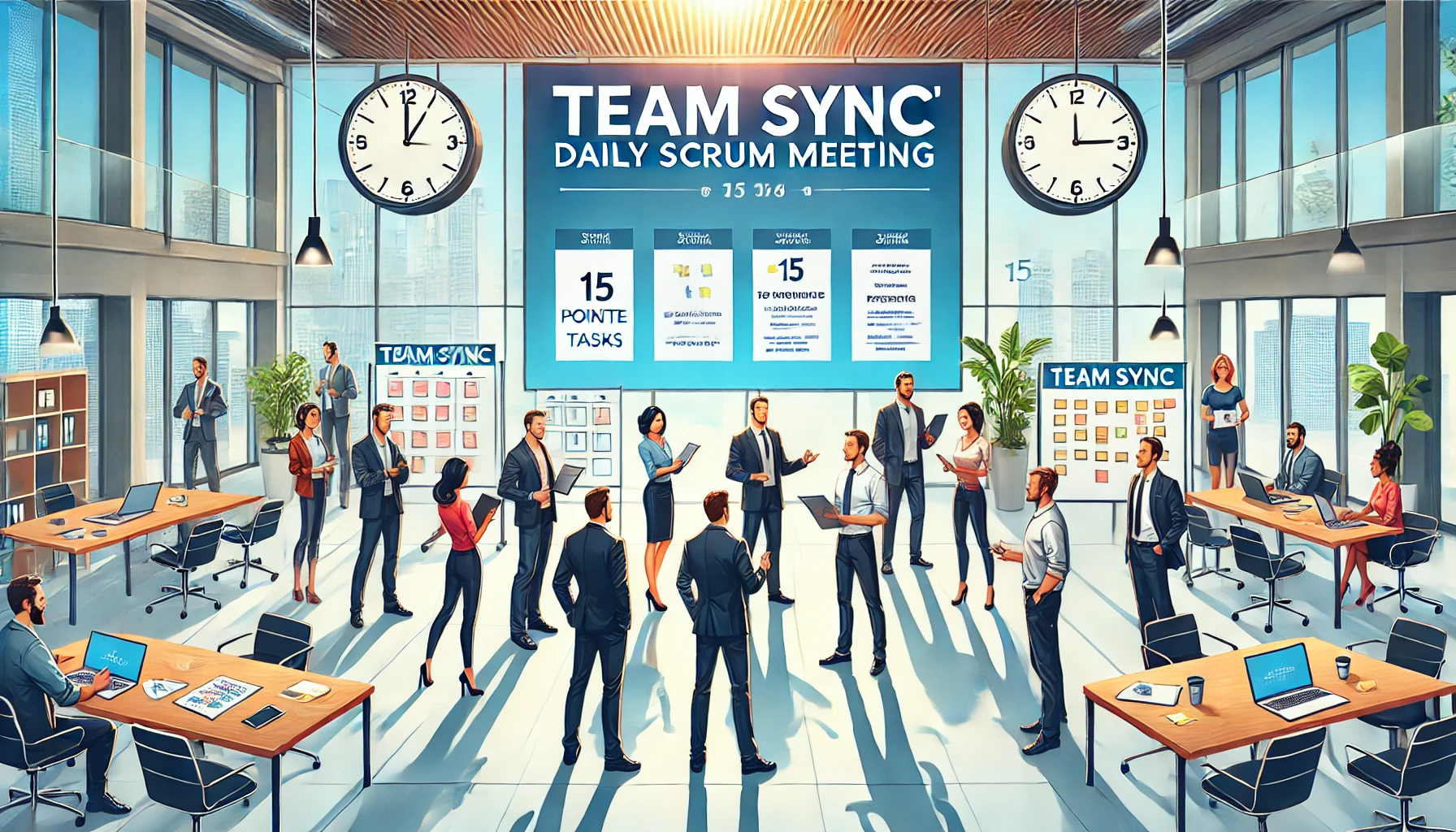The change from Daily Stand-up (DSU) to Team Sync in the Scaled Agile Framework (SAFe) 6.0 terminology reflects a broader and more inclusive understanding of team collaboration and communication within Agile practices. Here’s a breakdown of why this change is significant and beneficial:
Enhanced Collaboration
Shift from Status Reporting to Collaboration:
"Daily Stand-up" often carried connotations of a status report, where team members would sequentially report their activities. "Team Sync" encourages a collaborative mindset, where the focus is on teamwork, problem-solving, and helping each other overcome obstacles. It’s a place where inevitable silos are broken open and merged into one cohesive system.
Encouragement of Continuous Improvement:
By framing the meeting as a synchronization activity, it promotes a culture of continuous improvement. The team is encouraged to adapt and refine their processes based on daily feedback and interactions. This improvement in terminology is significant. Any complex system will have deviations, and acknowledging the need to realign can be challenging. A meeting focused on continuous improvement and daily micro-adjustments, rather than a grilling session, frees everyone to adjust. We’re not scolding; we’re synchronizing.
Alignment with SAFe Principles
Emphasis on Team Empowerment:
SAFe strongly advocates for empowered, self-organizing teams. "Team Sync" aligns with this principle by reinforcing the idea that the team collectively owns the process and outcomes of the meeting, rather than simply reporting to a Scrum Master or a manager. At Paladin & Archer, new team members often experience culture shock, looking for a "boss" in an environment where decisions are not top-down. An Agile team emphasizes "Team Sync," not "Boss Alignment." The Team Coach (Scrum Master) inspires and guides, but the answers come from the Team during their Sync.
Facilitation of Cross-Functional Collaboration:
The term "Team Sync" resonates well with the cross-functional nature of Agile teams. It implies that members from different disciplines (e.g., development, testing, design) are coming together to synchronize their efforts towards a common goal. Agile development differs from waterfall development in that it includes all stakeholders in discovering opportunities and challenges.
Broader Scope of Communication
Inclusivity of Remote and Hybrid Teams:
The term "Daily Stand-up" traditionally implied a physical gathering where team members would stand up to discuss progress. In today’s remote and hybrid work environments, not all team members can physically gather. "Team Sync" is more inclusive, emphasizing synchronization rather than the physical act of standing. At Paladin & Archer, this change reinforced our approach to meetings. We work almost exclusively as fully remote teams, whether on our own projects or with clients. While we value the brevity inspired by calling it a Stand-up, the meeting could include team members in various physical settings. Moreover, inclusivity is critical. For individuals who do not have the use of the lower half of their body, the term "Stand-up" is not appropriate.
Focus on Synchronization:
The new term highlights the primary objective of the meeting: synchronization. It emphasizes aligning the team on progress, impediments, and next steps, ensuring everyone is on the same page and can effectively collaborate. At Paladin & Archer, we've found that the way team members are invited to report is critical to this sharing, and the term “Sync” is a great first step toward a focused report.
Practical Benefits
Clarity and Purpose:
Changing the name clarifies the purpose of the meeting. It’s not just about reporting what was done yesterday and what will be done today, but about ensuring the team is moving forward together, identifying impediments, and planning the day’s work cohesively. The meeting can be the difference between ambiguity and clarity, laxity, and motivation. It’s easier to face the day knowing you are moving in the right direction.
Adaptability:
The concept of a "Team Sync" is adaptable to various Agile practices beyond Scrum. It can be easily understood and adopted by teams practicing Kanban, XP, or other Agile methodologies, making it a versatile term within the broader SAFe framework. At Paladin & Archer, we are comfortable working within whatever practices our clients use. However, every project benefits from a Team Sync.
Conclusion
What’s in a name? Quite a lot, it turns out. It’s the verbal handle that sets the expectations for the entire experience. The renaming from DSU to Team Sync reflects an evolution in Agile thinking, emphasizing synchronization, collaboration, and inclusivity. This change aligns with the dynamic and diverse nature of modern Agile teams, fostering a more cohesive and empowered approach to daily meetings. By focusing on the intent and outcome rather than the format, "Team Sync" better supports the principles and practices of SAFe, ultimately contributing to more effective and resilient teams.

